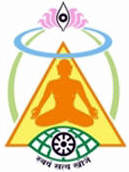
Yogasana
Yogasanas, the yogic exercises are an essential part of Preksha meditation. Until and unless the body is put into a relaxed, still and steady posture, one fails to achieve deep state of meditation. According to the Jain yoga practices, in the beginning, one should perform the yogic exercises on the floor in a lying posture that requires less energy. Subsequently yogic exercises in sitting and standing postures may be performed which increases the levels of energy consumption.
Objectives
The main objectives of yogic exercises are as under:
- To achieve mental and physical well-being
- To prepare the body and mind for meditation
- To gain mental strength
- To built a strong foundation of spirituality
Yogic exercises and meditation
Physical exercise, is included in Preksha Meditation to bring about positive transformation in our personality. It is believed that improper way of meditation sometimes may adversely affect the digestive system and make it inefficient and dull. Yogic exercises if performed along with meditation have the ability to neutralize this effect. Simultaneously performed meditation and yogic exercises can help to control our emotions through the awakening of the various psychic centers and regulation of the endocrine system. For example, Sashankaasan can prove helpful in controlling anger. Similarly, a combination of meditation and different yogic exercises such as padmaasan, vajraasan, sukhaasan may provide multiple benefits to the practitioner.
Yogic exercises and aerobics
Aerobics is undoubtedly extremely helpful in promoting physical fitness. But it creates a tension in muscular system, which in long term can cause problem. However, yogic exercises offer several additional benefits to the practitioner if done accurately and are therefore, superior to aerobics in the following manner.
- During the yogic exercises, the movement of the body is kept slow and gentle and emphasis is given to correct way of breathing in contrast to aerobics.
- Since yogic exercises are very slow and gentle, they cause little or no harm to the body. Whereas aerobics are very fast, and vigorous and have inherent risk of causing physical injury.
- Yogic exercises promote the health of both the physical and physiological organs of the body while aerobics concentrate mainly on the development and growth of the body muscles.
- In yogic exercises, there exist a provision to provide autosuggestions to the mind and the inner organs. Aerobics offer no such technique.
- Overall, yogic exercises offer physical, mental, and emotional well being while aerobics can provide only physical health.
Benefits
In general, the yogic exercises offer following long-term benefits:
- Promotes overall physical fitness
- Makes the immune system strong
- Cures body aches
- Regulates the functioning of the vital body organs such as brain, lungs, stomach, pancreas, joints, etc. through proper supply of oxygen to the metabolizing cells.
- Revitalizes self-esteem
- Imparts discipline and alertness of the mind and brain
- Promotes mental peace and spirituality
Specific recommendations for yogic exercises
For yogic exercises, it is absolutely essential to select appropriate place, apparel, time, and right technique.
A clean, serene, and well-ventilated location is desirable. Avoid a damp, dirty or polluted place. One should wear loose, light, and comfortable clothes. It is recommended to perform all types of yogic exercises on a thick blanket in order to avoid the loss of energy.
In general, yogic exercises are performed early in the morning. However, few yogic exercises can also be done safely 3-4 hours post meals. Different rules apply to different yogic exercises. So it is advised to perform them under proper guidance. Vajraasan can be practiced immediately after meal but not sarvangaasan. Similarly, the duration of different yogic exercises vary with the type of the exercises, age, and physical condition of the practitioner. In general, 20-30 minutes are sufficient for most of the yogic exercises. Although, the practitioner may choose to take breaks in between and perform particular exercises for 5-10 minutes in a session, it is absolutely essential to maintain a daily routine. If we are unable to find sufficient time to perform specific exercises for every part of the body, we must at least pay daily attention to the five most important parts of our body viz. brain, backbone, heart and lungs, abdomen, and the feet.
(For more details, refer Preksha Meditation: Yogasana and Pranayam)
Conclusion
A regular regime of a combination of yogic exercises is a safe, sure, versatile, and scientific way to promote physical, mental, and spiritual well being. The applicability is not limited to any particular factors. Hence can be performed by one and all.
 Sadhvi Vishrut Vibha
Sadhvi Vishrut Vibha

